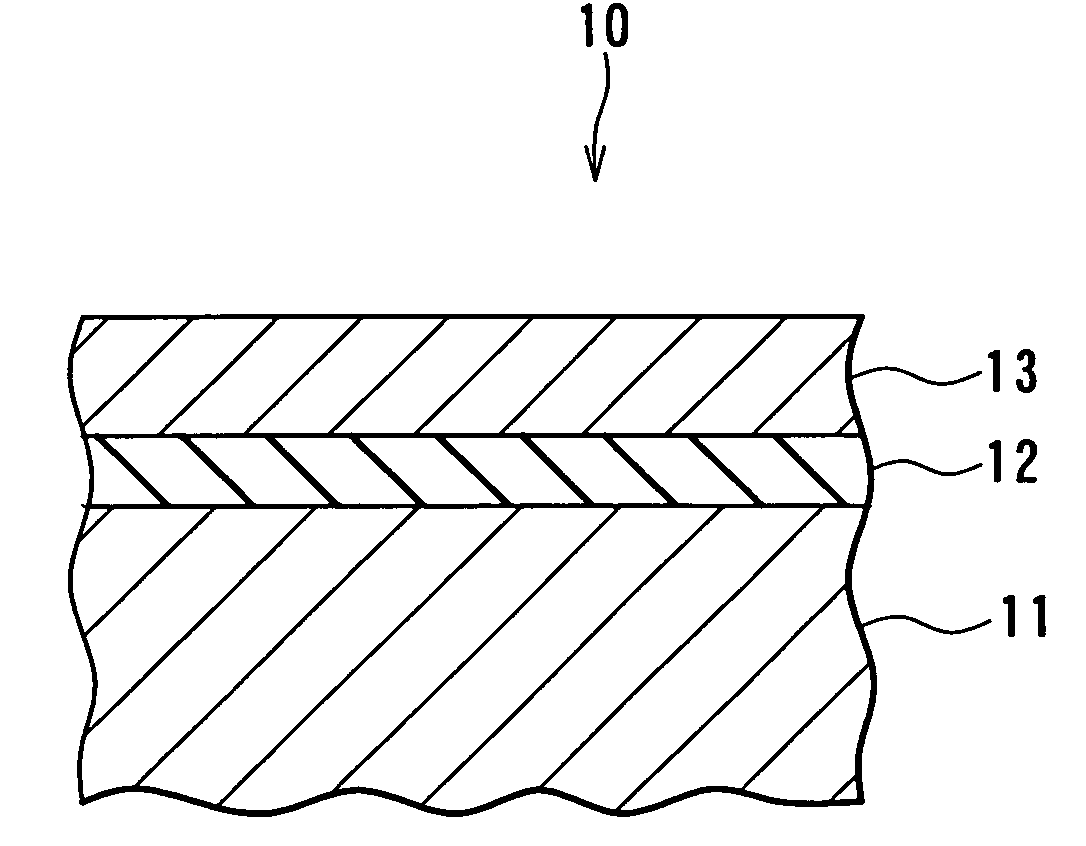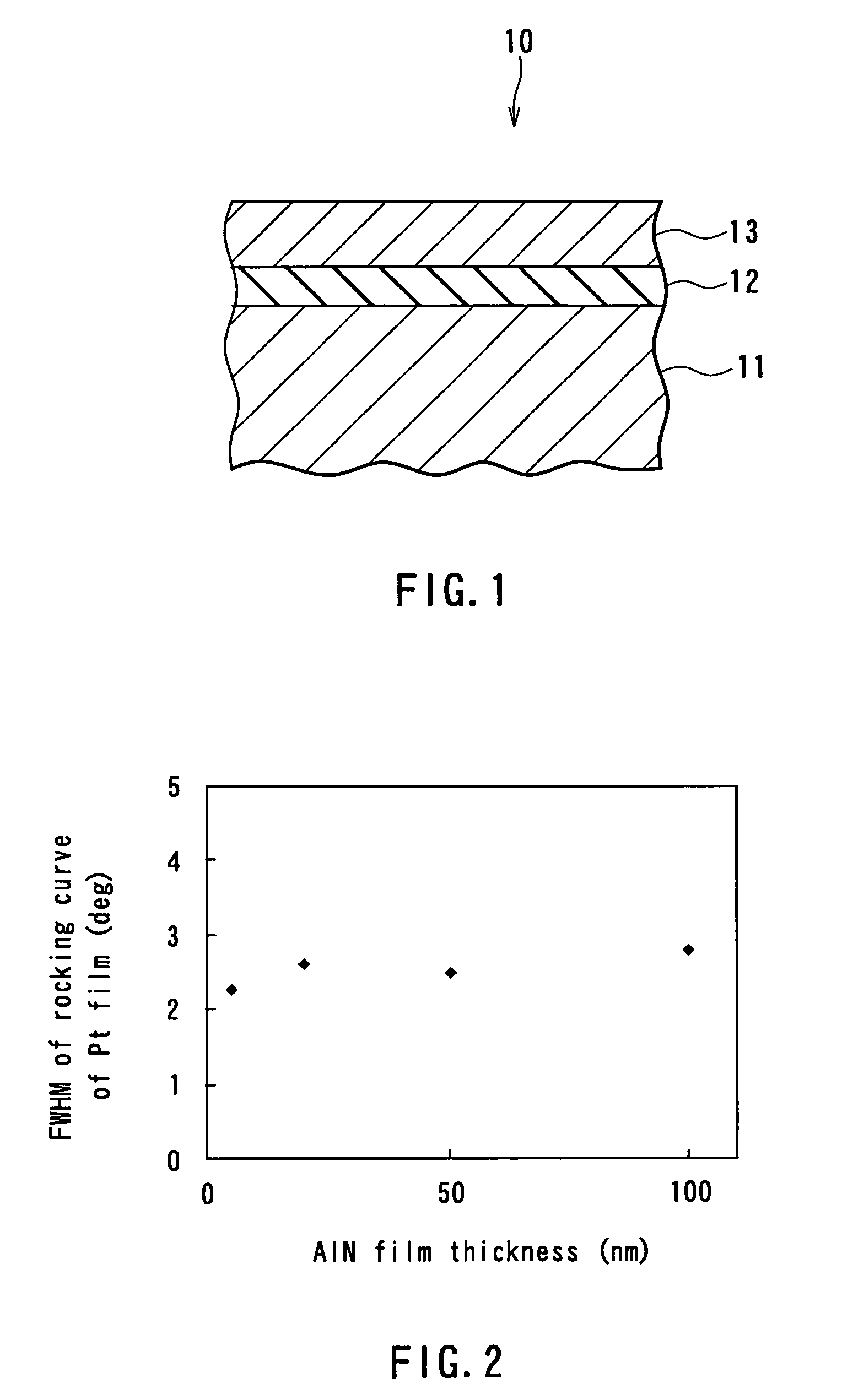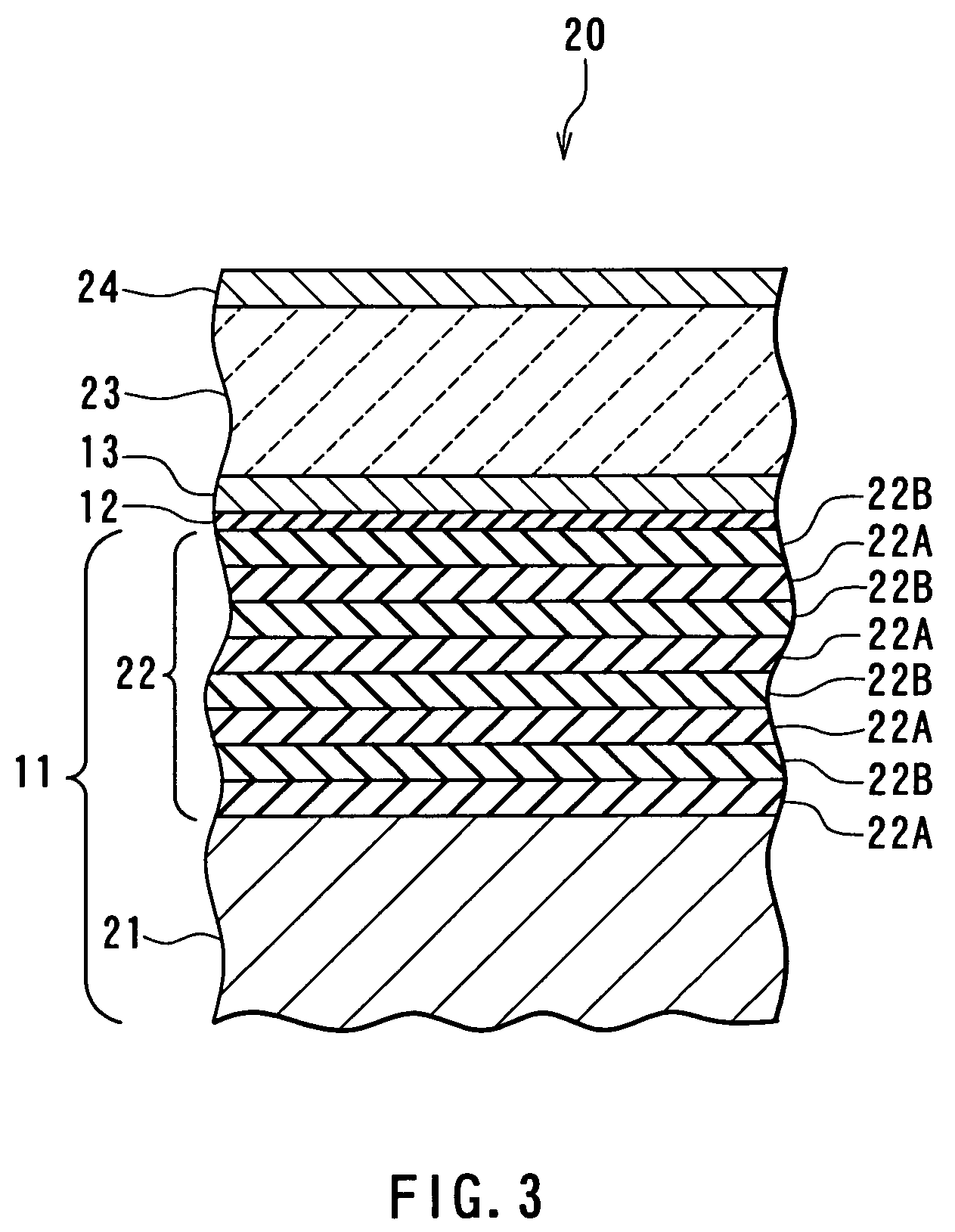Substrate for electronic device, electronic device and methods of manufacturing same
a technology of electronic devices and substrates, applied in the direction of solid-state devices, semiconductor devices, mechanical vibration separation, etc., can solve the problems of affecting the reliability of the process and the electronic device, the inability to form epitaxial films on such a base layer, and the inability to fabricate excellent crystallinity conductor films, so as to achieve the effect of improving the crystallinity the adhesion of the conductor films to the bas
- Summary
- Abstract
- Description
- Claims
- Application Information
AI Technical Summary
Benefits of technology
Problems solved by technology
Method used
Image
Examples
first example
[0088]A first example is an example of the substrate 10 for the electronic device. The base 11 of the substrate 10 of this example was made of a substrate of single-crystal Si having a surface on which a thermal-oxidized SiO2 film was formed. The substrate had a thickness of 250 μm and a resistivity of 1000 ohm-cm. The (100) plane of the single-crystal Si was parallel to the surface of the substrate. The surface of the substrate had been mirror-ground in advance and the thermal-oxidized SiO2 film was formed on this surface.
[0089]According to the substrate 10 of the example, an AlN film having a thickness of 50 nm as the adhesion film 12 was formed on the base 11. The AlN film was formed as follows. The base 11 was introduced to a vacuum chamber and the chamber was exhausted so that the pressure therein was 1×10−4 Pa. Next, a mixed gas of Ar and N2 at a flow rate of 25 sccm was introduced to the chamber so that the pressure therein was 0.4 Pa while the temperature of the base 11 was ...
second example
[0095]A second example is an example of the substrate 10 for the electronic device, too. The base 11 of the substrate 10 of this example was made of a substrate of single-crystal Si on which an acoustic reflection film was formed. The substrate had a thickness of 250 μm and a resistivity of 1000 ohm-cm. The (100) plane of the single-crystal Si was parallel to the surface of the substrate. The surface of the substrate had been mirror-ground in advance. The acoustic reflection film was formed by stacking four Al2O3 films each having a thickness of 1500 nm as the first dielectric layers 22A and four SiO2 films each having a thickness of 800 nm as the second dielectric layers 22B alternately in this order on the cleaned surface of the substrate. The Al2O3 films and the SiO2 films were formed by sputtering.
[0096]According to the substrate 10 of the example, on the base 11, an AlN film having a thickness of 50 nm was formed as the adhesion film 12. The AlN film was formed by reactive RF m...
third example
[0100]A third example is an example of the electronic device 20. The base 11 of the electronic device 20 of this example was made of a substrate of single-crystal Si on which an acoustic reflection film was formed. The substrate had a thickness of 250 μm and a resistivity of 1000 ohm-cm. The (100) plane of the single-crystal Si was parallel to the surface of the substrate. The surface of the substrate had been mirror-ground in advance. The acoustic reflection film was formed by stacking four AlN films each having a thickness of 1500 nm as the first dielectric layers 22A and four SiO2 films each having a thickness of 800 nm as the second dielectric layers 22B alternately in this order on the cleaned surface of the substrate. The AlN films were formed by sputtering while the SiO2 films were formed by CVD.
[0101]According to the electronic device 20 of the example, on the base 11, an AlN film having a thickness of 50 nm was formed as the adhesion film 12. The AlN film was formed by a me...
PUM
 Login to View More
Login to View More Abstract
Description
Claims
Application Information
 Login to View More
Login to View More - R&D
- Intellectual Property
- Life Sciences
- Materials
- Tech Scout
- Unparalleled Data Quality
- Higher Quality Content
- 60% Fewer Hallucinations
Browse by: Latest US Patents, China's latest patents, Technical Efficacy Thesaurus, Application Domain, Technology Topic, Popular Technical Reports.
© 2025 PatSnap. All rights reserved.Legal|Privacy policy|Modern Slavery Act Transparency Statement|Sitemap|About US| Contact US: help@patsnap.com



